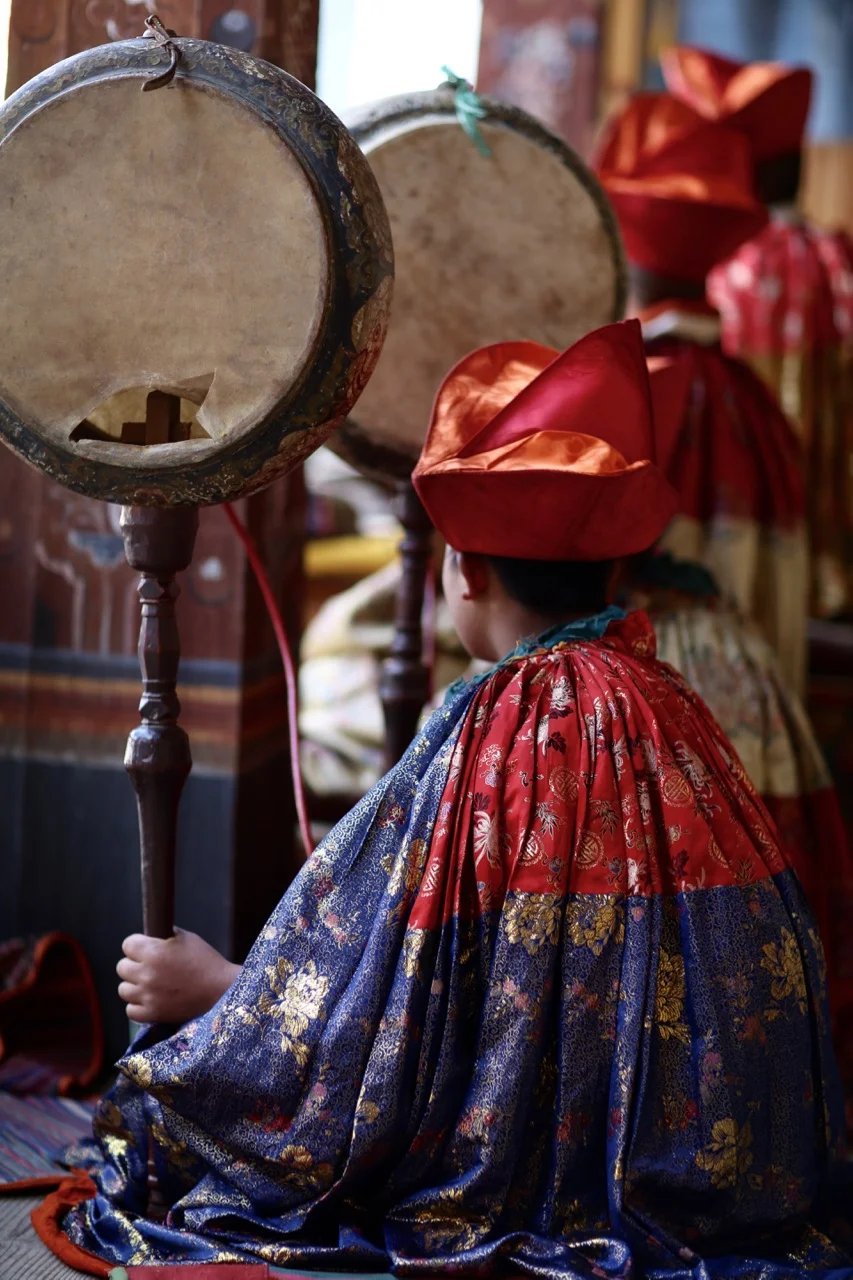Drubchen Festival & Mask Dance
The below post is from February 15th, 2016. It took time to post on account of my own need to process the experience.
It’s nearly noon when I head the news. I am standing in the sunlight at Trongsa Dzong when Steve indicates that our “friend” the police officer isn’t present on account of there being an incident at Taksee College (ILCS). I had heard the name of the school mentioned in passing when we arrived, but we were quickly distracted by the overly authoritative voice of the DzongkaDag, who was harshly negotiating with Steve, Gordie and myself that we must not just make photography of the mask dance, but learn it’s meaning. Steve is quickly irritated — as the man seems to refuse to acknowledge that that is exactly why we are in the country! To learn the culture… especially the mask dance! And that attending and photographing this is a means to that end. But as the mask dance ends, and the Election Sir tells us to stay for lunch, I am struck by the news that there was a suicide on campus.
It is a bit in irony that the meaning of the mask dance is to practically prepare a human's consciousness (or soul) for what they will see in the afterlife. As the dance master spins, he is gathering all of the forces in the universe and putting them into a triangular box. The other masked dancers are representing the spirits which one might meet in the after life, spirits of whom they should not be afraid. The dance is a means to help the consciousness to recognize these spirits alive, so that they are not in fear of them in the bardo (afterlife). Finally, the three hour dance closes with a drum dance to celebrate the victory.
The whole dance is enchanting. When the drums reach a stopping point, it takes a moment for the body to reorient to an air void of vibration. The mind then has to settle into the quietness and get regrounded. As the end of the dance is in conjunction with the news of the suicide, I am struggling to feel grounded in any capacity. I am captive with the fact that we drove past the body just a few hours before and wondering how this will effect the campus life and energy.
Over dinner, I inquire to Election Sir about what the Buddhist burial is like and what will happen to the body. He informs me that the body will be cremated (by fire) and then the ashes might be put into the river, but he isn’t certain. I was warned by phone from an American friend and local lecturer not to expect any “grieving,” per se, as the death isn't something to linger about in Bhutanese culture. Still, I cannot help but wonder if a suicide will be different and if so how.
When I arrive back at the college, I am way past curfew. I am surprised (and a little excited) to find my room empty. I unload my day pack and start to fling the belt of my kira all over the floor when my room mates appear fully chirping to one another. They start to tell me about what they know and saw of the boy who committed suicide.
I cannot say who spoke first, but they mention a nervousness in the air, which I, myself, cannot feel. Pema confides that she went to see the body. The boy, a first year student, hung himself by his belt on a very small pole. She stated that his feet were just barely off the ground. She demonstrates the distance of his toes to the earth's surface by hovering her fingers an inch or two above the table - the space is a margin of error for a successful hanging. Like Pema, I am skeptical that it wasn’t foul play of a murder. Even though I cannot fathom who would want to kill such a young boy, at school no less.
Pema goes on to explain that suicide is becoming more common in Bhutan. When I ask her why she cannot quite say the reason.
A German professor was also at the sight of the boy's body said watched as the brother of the boy took the “broken kid” away from the scene in a “squarish crate on the back of a pick-up truck.” He goes on to say, “It was very solemn and beautiful, what with the incense and big yellow drapes. The Bhutanese all looked serene and detached, but the visible cracks in the brother’s facade were haunting.”
I cannot help but wish I had been there, to see the body depart. Although I have never been to a funeral, I have always thought that there was some peace to be had by seeing a body at it’s death place. It goes beyond the casket, and helps a person to visualize the place where a person’s soul left the body. In mourning, to meditate and ease a soul from the bardo - it is useful to have the same departure point as the consciousness of the deceased.
Pema’s words describe the boys situation before he died and is reminded of another recent suicide of a pair of teens, boy + girl, one valley over, who hung from the same tree by the same cabney (religious scarf) when she discovered she was pregnant. As she talks, Pema is working a small weaving task between her hands - a kind of addictive motion, but soothing — which in America might be substituted by a wine glass or cigarette, or binge TV watching.
All this to say - my roommates will leave the light on tonight. They are afraid and weary and trying not to cry - and somehow this florescent bulb will act as their savior from any hungry ghosts which might have been called here on account of todays occurrences.






























